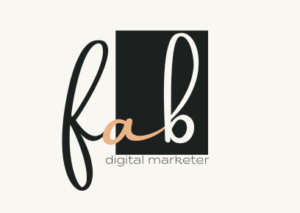
Digital Marketing: The Power of SEO, SMM, SEM, and Web Development in Business Growth
In the digital age, establishing a robust online presence is essential for business success. Digital marketing—a broad field encompassing a range of strategies—allows businesses to reach their target audiences and drive conversions. Among the most impactful strategies within digital marketing are SEO (Search Engine Optimization), SMM (Social Media Marketing), SEM (Search Engine Marketing), and Web Development. These pillars collectively enhance a brand’s visibility, engagement, and ultimately its profitability. This article delves into each of these components, explaining how they contribute to an effective digital marketing strategy.
SEO (Search Engine Optimization)
Search Engine Optimization (SEO) is the practice of optimizing a website to rank higher on search engines like Google, Bing, and Yahoo. Ranking higher in search results increases a website’s visibility and drives organic (non-paid) traffic. SEO is often broken down into on-page, off-page, and technical optimization.
On-page SEO involves optimizing content on a website, such as using relevant keywords, meta tags, alt texts, and headers. The content should be valuable, engaging, and answer users’ queries to rank well on search engines.
Off-page SEO focuses on increasing the website’s authority through external activities like link-building, which involves acquiring backlinks from reputable sites. Quality backlinks signal to search engines that a website is reliable and relevant, which can boost its rankings.
Technical SEO is about improving the website’s technical aspects, such as site speed, mobile-friendliness, and security (HTTPS). Search engines prioritize websites that provide smooth user experiences.
SEO is vital for businesses aiming for long-term growth as it can generate continuous, organic traffic. Unlike paid ads, the results from SEO efforts tend to be lasting, providing a cost-effective marketing solution. As SEO practices evolve, businesses must stay updated with algorithm changes and adapt their strategies to stay competitive.
SMM (Social Media Marketing)
Social Media Marketing (SMM) is the practice of using social media platforms to connect with audiences and build brand awareness. Platforms like Facebook, Instagram, Twitter, LinkedIn, and YouTube allow brands to interact with customers, share content, and build loyalty.
Creating a Strong Presence: SMM starts by creating and maintaining a consistent brand presence on social media. Visual consistency, engaging content, and regular updates help a brand stay relevant in users’ minds.
Content Sharing and Engagement: Social media content is diverse—photos, videos, infographics, and live streams can all be used to engage audiences. Polls, quizzes, and Q&A sessions make brands more interactive and accessible, encouraging audiences to participate and engage with the brand.
Advertising on Social Media: Paid advertising on platforms like Facebook and Instagram allows businesses to target specific demographics, interests, and locations. This precise targeting maximizes the ad’s impact and ensures that it reaches the intended audience. Social media ads are cost-effective and often provide quick results.
Influencer Collaborations: Partnering with influencers who have a strong following can amplify a brand’s reach and credibility. Influencers can introduce the brand to new audiences in an authentic way, which can lead to increased engagement and brand loyalty.
The value of SMM lies in its ability to create a community around a brand, drive traffic, and generate brand loyalty. Social media platforms are ideal for both B2C and B2B marketing, enabling companies to adapt their strategies based on their audience’s preferences.
SEM (Search Engine Marketing)
While SEO focuses on organic traffic, Search Engine Marketing (SEM) is the practice of using paid advertising to appear in search engine results. SEM, often called Pay-Per-Click (PPC) advertising, allows businesses to bid on keywords so their ads appear above or alongside organic search results.
Keyword Research and Bidding: SEM requires identifying the most relevant keywords for a business and bidding on them. Keywords can vary in cost, and their selection is crucial to ensuring the ad reaches the right audience.
Creating Compelling Ad Copy: SEM involves writing concise, compelling ad copy that attracts clicks. Ads need to be clear, relevant, and have a strong call-to-action (CTA) that encourages users to take the next step, such as visiting a website or making a purchase.
Landing Page Optimization: The page users land on after clicking an ad must be optimized for conversions. It should match the ad’s message and provide a seamless, user-friendly experience.
Tracking and Analysis: SEM is data-driven, requiring continuous analysis to ensure optimal performance. Tracking metrics such as click-through rate (CTR), cost-per-click (CPC), and conversion rate helps businesses refine their campaigns for better results.
SEM is particularly effective for businesses seeking immediate visibility and conversions. While it may be costly, it allows companies to target specific user segments with a higher degree of control and quickly scale their efforts.
Web Development
A well-designed website is the cornerstone of a digital marketing strategy. Web development encompasses both front-end (user-facing) and back-end (server-side) development, and it plays a vital role in ensuring that visitors have a positive experience on a site.
User Experience (UX) Design: The design of a website should be intuitive and user-friendly. Easy navigation, fast loading times, and clear CTAs enhance user satisfaction and encourage users to stay longer on the site, ultimately increasing the likelihood of conversions.
Responsive Design: With the rise of mobile browsing, websites must be responsive, meaning they should adapt to different screen sizes and devices. A mobile-friendly design ensures that users on any device have an optimal experience.
SEO-Friendly Structure: Web development should include an SEO-friendly structure, such as using clean URLs, optimizing image sizes, and ensuring fast load times. A site that is optimized for SEO from the start will be more likely to perform well in search rankings.
Security: A secure website is essential for user trust. Implementing SSL certificates, securing data, and protecting against cyber threats are key aspects of web development that build credibility and protect user information.
Analytics Integration: Web development should include the integration of tools like Google Analytics, which allows businesses to track user behavior, website traffic, and conversion rates. This data helps digital marketers make informed decisions and optimize the site accordingly.
A well-developed website functions as the “digital storefront” for a brand, making it essential to invest in quality web development. A site that is visually appealing, functional, and secure creates a positive impression and builds trust with potential customers.
